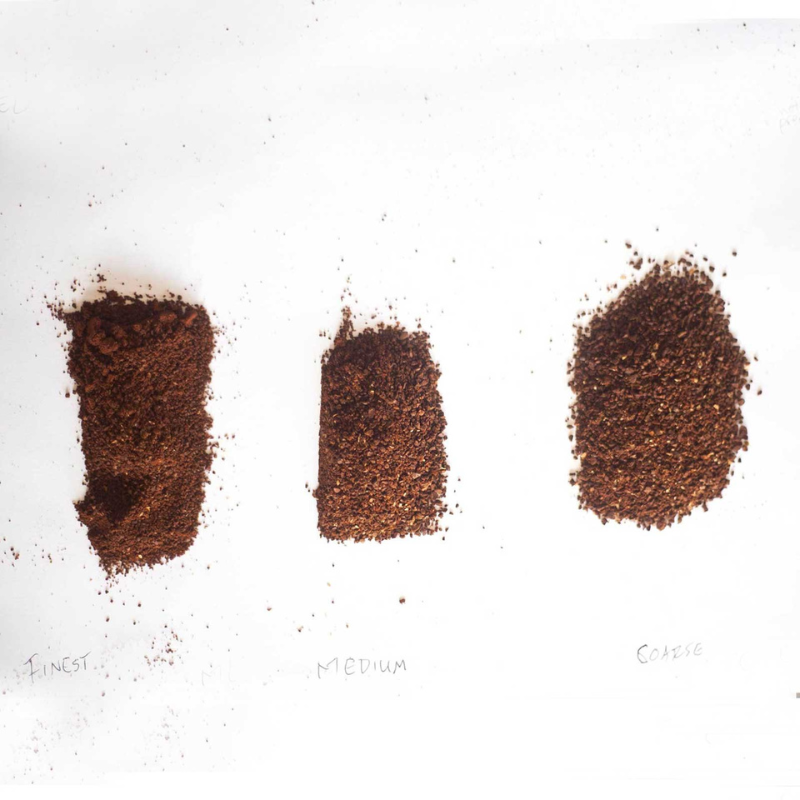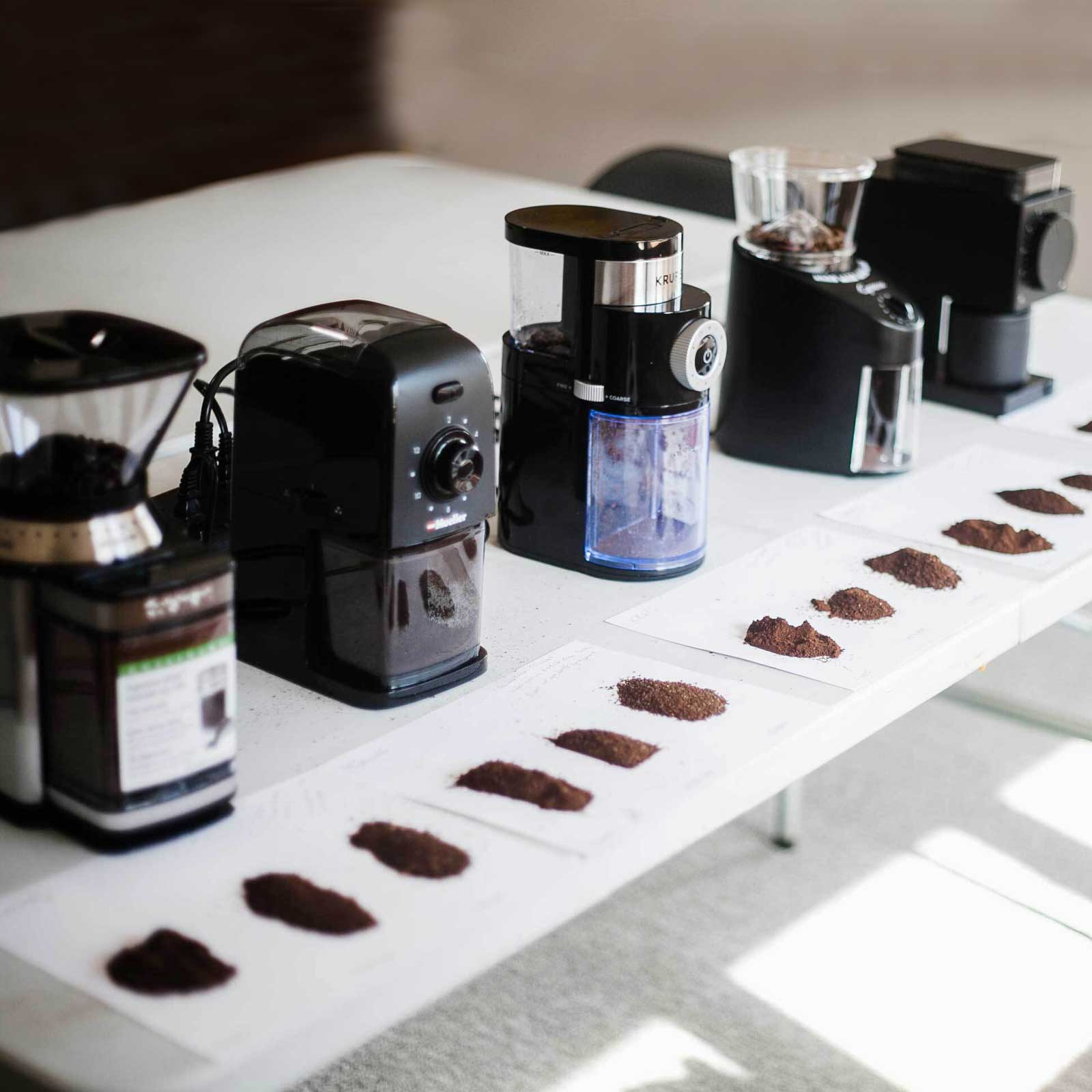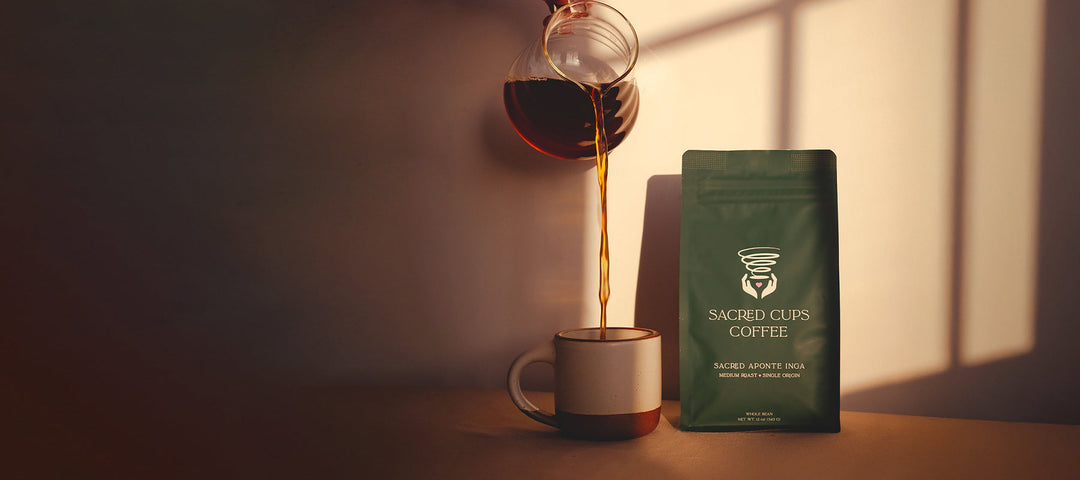A number of people have reached out recently that would like to give coffee subscriptions for gifts, but need grinder recommendations. Next to buying high quality pure ground coffee - choosing a good grinder is key! Coffee lovers know that freshness is an important part of the perfect cup, and your coffee will be far better if you grind it yourself right before you brew it. The way you prepare and grind your coffee not only affects the flavor, but the extraction method can affect the health benefits as well. Grinding in the right way not only improves the taste, but also how much of the good stuff that's extracted.
Focusing on the grind
It's important to grind your coffee to match your brewing method and to grind fresh within 15 minutes of brewing.
- Grind coarser for French press (cafetiere), medium-to-fine for drip (like coarse decorator’s sugar), and fine for espresso.
- Changing the grind particle size can make the biggest impact on the taste of the final brew, so play around with it. The finer the grind, the more coffee components will be extracted. Therefore, the more precise the grinder, the more chance to find just the right grind for your taste.
- The longer the coffee grounds are in contact with water, the more will be extracted. In general: The shorter the contact time, the finer you should grind. A shot of espresso is extracted with high pressure in about 20-30 seconds, so it needs to be finer than a French Press that sits for 3-5 minutes before pushing the plunger and serving. Therefore, having fine grinds mixed in with coarse grinds in too large ratios will make it more difficult to find the best taste. With that being said, all grinders produce variation, and that variation adds complexity to the finished brew.
- One tablespoon of fine grind weighs more than one tablespoon of coarse grind, so “scoop” or “spoonful” recommendations are too imprecise.
Some people avoid grinders altogether and just throw the beans in a blender, but try to resist that temptation. A blender is a type of “blade grinder”, which chops up the coffee only to a certain particle size. Although some particles may be the same size, there is usually a wide variation, which makes it hard to make the coffee taste good. You would need to keep the blender running for a while, and afterwards, you’d still have unevenly ground coffee, but it would also be heated by the friction, which isn’t good for the coffee.
If you want a grinder that will help you get the best possible flavor out of your coffee, you are better off getting a burr grinder. A burr grinder has two metal or ceramic discs with sharp upward “fins” that crush the beans. Some of the discs are flat, and others are cone-shaped (often the choice for espresso).
One of the first places you may look for a coffee grinder is on Amazon, but the reviews can be confusing. No matter which grinder you pick, there are both 5-star and 1-star reviews for the same grinder. On top of that, there are dozens to choose from with prices ranging from about $30 to hundreds of dollars.
To be sure we gave you the best recommendations, we bought and tested 7 of the most popular burr grinders that were under $100, one that was around $100 and one that was around $300.
Unfortunately, we couldn’t find a reasonable way to test the longevity of the grinder. CAVEAT EMPTOR: Most inexpensive grinder motors fail within 2 to 3 years. We’ve even had grinders whose motors randomly fail within a couple of months (return to Amazon or manufacturer if under warranty). It’s sad to say that fixing a grinder is usually more expensive than buying a new grinder under $100.
We compared these to a couple of commercial grinders in our lab. Please read on for more information on the variables of brewing, the grinders, and how grind impacts the taste (and sometimes health) of your finished brew.
Making Great Tasting Coffee: Brewing Principles in Relation to Grind
“Adjust to taste.” Everyone has their own taste preferences for how they like their coffee brewed, and by changing the variables of brewing coffee, the exact same beans could taste like totally different coffees. If you want your coffee to taste different, start by only adjusting one variable. Try changing either the grind or the quantity of coffee you use. Brew fresh each time, don’t let coffee steep on a hot plate for more than a few minutes… and please don’t microwave coffee.
Our tests were informal and simple:
- How noisy is the grinder? Since most people grind first thing in the morning, the sound matters to our ears and to those who may be still asleep.
- How accurate were the grind settings? How easy were they to adjust, so that we could “dial in” the right grind that makes our Purity Coffee® taste the way we like it.
Grinders under $100:
Mr. Coffee Automatic Burr Mill Coffee Grinder with 18 Custom Grinds
This machine is a utilitarian burr grinder that comes with a scoop and grinder brush attached to the lid as a bonus. The grind is adjusted by twist-dialing the hopper itself, and it is clearly labeled from fine to coarse. The quantity of coffee grounds is adjusted by a timer dial.
The hopper is nice and big—it can hold a whole 12 oz bag of beans and the lid fits tightly to keep out as much oxygen as possible.
The grinder was loud, and it took a full minute to grind 100 grams. Static electricity is a problem with many grinders, and this one had the most trouble with it. As it fills the collection cup, the static electricity causes the finest grinds to stick to the walls of the container (see photo below), which I suppose can be useful to remove the fines if you don’t want to brew them —you can scrape them out. A lot of coffee was left in the chute, too, which means the next time you grind, you’ll be getting old coffee mixed in with new coffee. I might give this as a gift.
There are two dials that adjust the grind size and the length of time grinding, but it refers to the number of cups for electric drip brewers. The grind adjustment dial had a lot of movement, so was difficult to change things accurately. The problem with this grinder was that there was very little difference between the fine grind and the coarser grind settings. Therefore, this grinder would be all right for a French press (brew hotter and steep longer) or big electric batch brewer (more than 3 liters) that takes more than 5 minutes to brew. But it was not adjustable to other brew methods.
The grinder is loud, and it took about 50 seconds to grind enough for a pot of coffee… too loud and too long first thing in the morning for me, so I would not gift this to someone.
Being a conical burr grinder I expected better from this machine. A little metal handle on the hopper adjusts the grind size from “extra fine” to “coarse”. I suppose the dots in the area between fine and medium would be meant to be used for electric drip brewers.
The “extra fine” setting did not produce anything close to what someone might want to use as espresso—the grind was still too large, and there was not much variation between the adjustments. There was less static, though, and the grinds came smoothly out of the chute. There were always a few big “boulders” (chunks) of beans in every grind setting. It is the same as the generic flat burr grinder in terms of usefulness. I would not give this as a gift.
SHARDOR Conical Burr Coffee Grinder, Electric Adjustable Burr Mill with 35 Precise Grind Settings
On this grinder, there are numbers that correspond to the setting. This is useful if someone else you know has the same grinder—you can share settings for different brewing methods. The timer dial similar to the other grinders indicates the number of cups in relation to time… use these recommendations just as a very rough guide.
This was the quietest grinder of the four, and it had the most accurate variation for grind settings. The finest grind setting actually gets finer than needed for espresso—getting closer to a Turkish grind.
In addition, the chute that dispenses the grounds clears itself, leaving little behind. This also keeps the area around the grinder tidier, since it is less messy when removing the container from the base. I would give this as a gift.
KRUPS Precision Grinder Flat Burr Coffee for Drip/Espresso/PourOver/Cold Brew, 12 Cup, Black
This little grinder did a good job grinding and was able to do a decent espresso grind. It was the smallest grinder, so I would consider giving it to someone who has a small kitchen. The hopper is small, but it is simple and not too loud. Static again is a problem, but, it seems to be the case with most grinders. Although it was high-pitched, it wasn’t too loud. I would give this as a gift.
This grinder came in as the least expensive of all the grinders we tested. The motor was a low rumble, that was not too loud, but there was a lot of variation in the particle size from coarse to medium. It was not able to do a good espresso grind, though. I might buy it as a gift, if I knew the person mainly brewed French presses and I wanted to keep the cost low.

Cuisinart DBM-8 Supreme Grind Automatic Burr Mill
This machine had a nice big hopper and ground the coffee precisely without much variation. However, it took a long time and had a high-pitched “tinny” sound to it. The espresso was nicely done, as were the other grind levels. However, because of the sound and the time taken to grind for a full pot of coffee, I would not buy it as a gift.
Grinders $100-$300:
Capresso Infinity Conical Burr Grinder
This grinder was quiet and the burrs were sharp and precise. The espresso was barely fine enough to be used in a portafilter and get the right time for a shot of espresso. It feels like a good quality, solid machine. I would give this as a gift.
Fellow Ode Brew Grinder - Electric Burr Coffee Grinder, 31 Settings
This grinder was quietest and the burrs produced an excellent, precise size. The machine does not have a setting for espresso, though. As the name mentions, it seems to be for “brewed” coffee, which I believe means “drip” brew or French press. However, espresso is also a brew method, and I’m a little disappointed that it doesn’t do espresso. The machine is cool, and it appears to be a good quality, serious machine. It has a small hopper, magnetic “catch” button and does not seem to retain much coffee in the chute. I would give this as a gift.
A deeper lab analysis of the grinders
When we do quality control in our lab, we use grinder screens to test for variation in sizes of the grounds after grinding. These screens are standardized (International Standards Organization), and we can communicate across the industry about grinding issues. We put a certain amount of ground coffee into the top screen and shake it. The different size particles pass through some screens and ultimately land on a screen that is woven too fine for them to pass through.

Results of the Sieve Test on the 4 grinders tested against 2 commercial grinders
We ground 100 grams of the same coffee to an acceptable level for an electric drip brewer and put them through the sieve shaker test for 1 minute of shaking time. The results were as follows:

From the results of the sieve shaker test, we can see that the Shardor grinder most closely matches the extremely expensive commercial roller grinder. This was remarkable.
To sum up our findings, we found a few good grinder options under $100: the Shardor Conical Burr 35 Setting Grinder that was tested for this blog post, but I have tested my Mueller Conical Professional Series Grinder and it is accurate and adjustable, too. Being able to adjust the grind of your coffee is critical to get you to the flavor that you like in a coffee, but remember that there are other variables you can adjust, too, just be sure to only change one variable at a time as you experiment to find your optimal brew.
We hope that you found our recommendations to be helpful! Feel free to leave your own grinder recommendations in the comments below.
17 comments

















Highly recommend 1Zpresso K-Ultra Manual Coffee Grinder. It beats all other grinders when it comes to bringing out the full depth of flavor in your coffee. The depth of flavor is so noticeably better with this hand grinder that I don’t think I’ll ever be able to go back to electric again! Yes, it’s pricey. But it’s worth every penny. Can be purchased on Amazon as well.
Thankyou, For sharing such a useful information with us.
This is Interesting for me to know which one to decide the right one to buy for the gift my wife who is a coffee lover.thanks for tips.
I have the Krups grinder from this story. It does a good job overall, but definitely has problems with fines clinging to the plastic receptacle. I tried the Ross Droplet Technique today, and it reduced the ciffee fines a good bit. I spent last week at my son’s house taking care of our two grandchildren, and used his Shardor. This grinder left virtually no fines in the receptacle, and it produced a very good ground coffee.
Next to the quality of the coffee bean itself, a good grinder is necessary. I received the Cuisinart as a gift many years ago and it is super loud, has a very inconsistent grind, and the static on it creates a giant mess (not something anyone wants to deal with at any time of day, especially early mornings!). I upgraded to a Baratza Encore which retails for around $120 and it is a game changer. Sure it costs three times as much as a Cuisinart, but it results with way less static, plus the numerous grind settings are awesome. Invest in this machine and you will not regret it.
Leave a comment